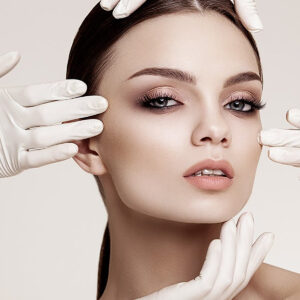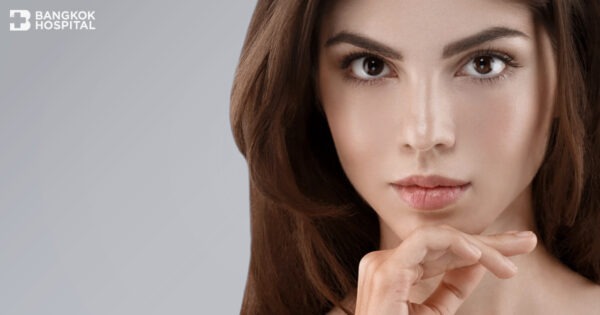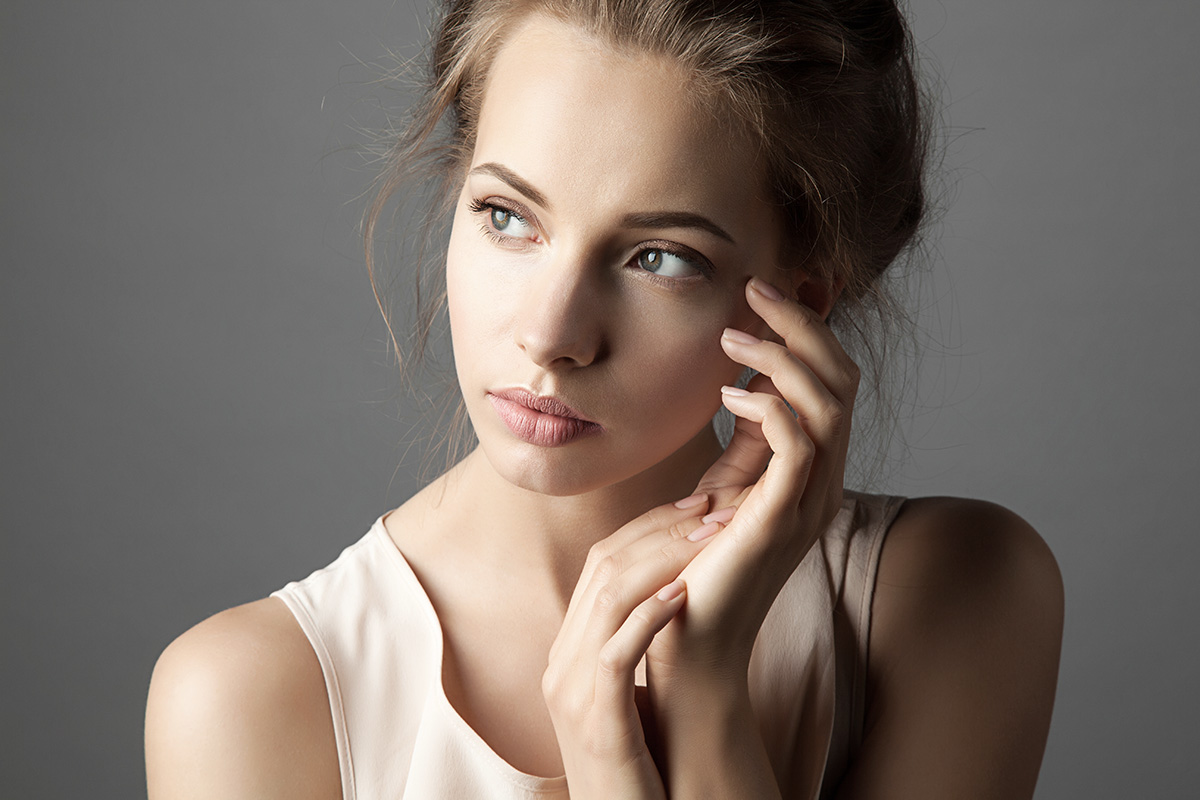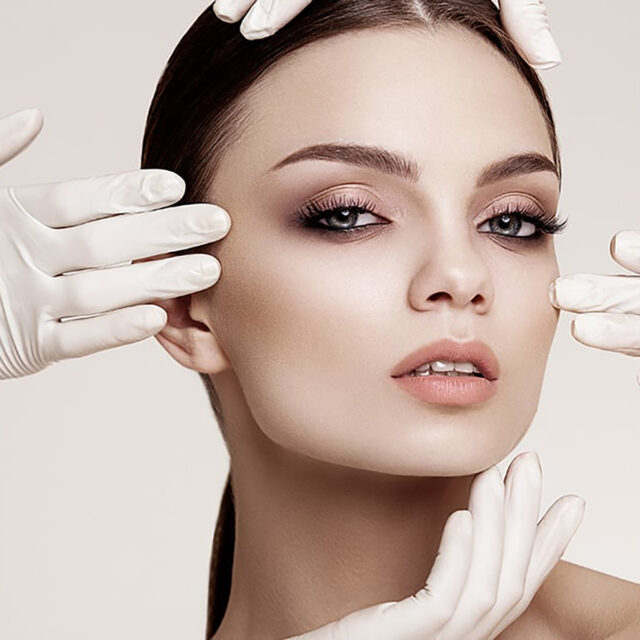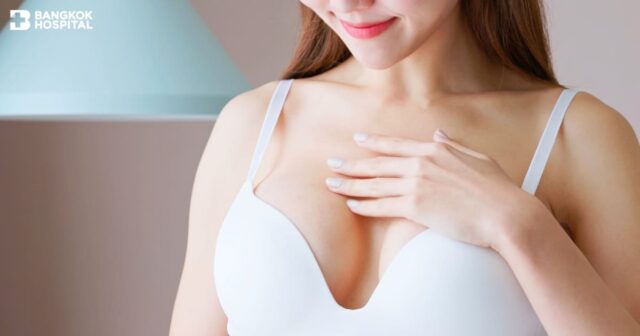With increasing age, skin begins to lose elasticity, causing the skin above and below your eyes to begin sagging and drooping. As we age, a number of people may notice the upper lids feel heavy. This can be caused by the eyebrow descending, upper eyelid skin excess or both. The common changes in the eyelids noticed by patients often include excess eyelid skin that is thin and loose, droopy or saggy eyelid causing eyelid ptosis and a dull look, excessive upper eyelid fullness due to bulging and sagging fat, excessive bulging fat causing eye bag, asymmetric eyelid crease and uneven position of the eyelid margins caused by a droopy eyelid. These eyelid problems largely affect confidence and wreak havoc on self-esteem. Cosmetic eyelid surgery (upper and lower eyelid blepharoplasty) can correct these issues, allowing for younger appearance with enhanced self-confidence.
Upper eyelid surgery (upper blepharoplasty)
Upper eyelid surgery is a surgical procedure that involves the resection of redundant or saggy skin and musculature of the upper eyelid. Principally, this procedure involves identifying the upper eyelid crease on each eyelid and designing a skin incision that removes saggy or loose skin and excessive fat to correct the problem while preserving normal eyelid closure. In some cases, a small amount of the muscle that closes the eyelid might be removed. Fat removal greatly enhances aesthetic contours. After designing a skin incision and its width, if excessive saggy skin and fat need to be removed, especially at the tail of the eye, the length of skin incision might be extended to contour the shape of the eye. The procedure is usually done under local anesthesia administration. Surgery involves making a skin incision along the eyelid crease in the natural skin fold of the eyelid, removing excess skin, fat or muscle and closing the incision with sutures. The surgical scar is usually hidden in the natural fold of the eyelid, making it less visible after healing.
Who should consider upper eyelid surgery
Upper eyelid surgery is recommended in patients who have:
- Absent or deep eyelid crease (eyelashes cannot be seen and the eye shadow space is covered), a very high eyelid crease, asymmetric eyelid crease and uneven position of the eyelid margins due to a droopy eyelid.
- Excessive upper eyelid fullness due to bulging and sagging fat.
- Droopy or saggy eyelid causing a drooping or falling of the upper eyelid (triangular shape), especially in the tail of the eye. Excessive upper eyelid hollow and sunken eyelids due to retraction of fat into the eye socket, causing vision impairment. Patients often experience restricted vision, especially in the upper and lateral parts. Since droopy eyelid does not function properly to protect the eye, sweating can cause eye irritation and burning sensation in the eye.
- Irritating upper eyelashes, leading to tearing and conjunctivitis –an inflammation or infection of the transparent membrane (conjunctiva) that lines eyelid and covers the white part of the eyeball.
Possible risks and complications of upper eyelid surgery
- Upper eyelid swelling and bruise. Bruising is a common side effect of eyelid surgery. While bruising may continue persisting for 1 to 2 months in some cases, it is more likely to improve within 1-2 weeks after surgery. The heaviest bruising usually develops within 24 to 72 hours after surgery. During this time, a cold compress is advised to reduce swelling and bruise.
- Uneven eyelid crease or unsatisfied result. Whether eyelid revision surgery is required, postoperative assessment conducted by plastic surgeon should be done 3 months after surgery when swelling improves and surgical incision completely heals.
- Double vision might temporarily develop due to eyelid swelling or the side effect of local anesthesia. After the effect of local anesthesia diminishes and swelling gets better, double vision subsequently disappears.
Lower eyelid surgery (lower blepharoplasty)
Changes in the lower eyelid are determined by advancing age and stress as well as lack of proper skin care. With advancing age, excessive fat in the lower eyelids is formed and eye bags become bulging. The lower eyelids become loose and saggy and the under eye grooves become deeper. As a result, excessive bulging fat causing eye bags can be apparently seen.
Lower eyelid surgery is considered an effective surgical approach that aims to improve the appearance of the lower eyelids by removing of excessive fat or changing its location to other fat-depletion area in order to lower skin redundancy and fix fat bulges. To rectify these problems, eyelid liposuction is not a safe option since the excessive fat locates very close to the eye and it might potentially cause serious eye injury. Lower eyelid surgery can tighten herniated excessive intraorbital fat and repair the weakening of muscles in the lower eyelid, resulting in youthful appearance with improved self-confidence. In addition, lower eyelid surgery helps to prevent epiblepharon which is the presence of a fold in skin and muscle of the lower eyelids which may cause eyelashes to rub against the cornea.
Who should consider lower eyelid surgery
Lower eyelid surgery is recommended in patients who have:
- Excess bulging fat that protrudes from the lower eyelid caused by genetics or advancing age
- Loose and saggy lower eyelid with wrinkles or deep grooves under the eye bags and baggy eyelid that can be noticed when smiling.
Possible risks and complications of upper eyelid surgery
- Double vision might temporarily develop due to eyelid swelling or the side effect of local anesthesia. After the effect of local anesthesia diminishes and swelling gets better, double vision subsequently disappears.
- Lower eyelid swelling and bruise. Bruising is a common side effect of eyelid surgery. While bruising may persist for 1 to 2 months in some cases, it is more likely to improve within 1-2 weeks after surgery. The heaviest bruising usually develops within 24 to 72 hours after surgery. During this time, a cold compress is advised to reduce swelling and bruise.
- Incomplete eye closure or difficulty closing eye might be a temporary side effect due to eyelid swelling. If the problem persists, post operative assessment should be conducted 3 months after surgery to determine whether revision surgery is required.
- Dry or irritated eye, gritty eye as a sensation similar to having a particle of sand in the eye, resulting in tearing and watery eye that can largely interfere with vision. This postoperative complication is often caused by the excessive removal of bulging fat in the lower eyelid, leading to eyelid retraction. It usually lasts for few days. However, if it develops, medical attention must be sought immediately.
Instructions prior to eyelid surgery
- Please keep the surgeon informed about your medical conditions and underlying diseases, including:
- Medical problems
- Serious illness or underlying conditions
- Medical history e.g. surgery and anesthesia administration
- Dental problems e.g. denture and wobbly tooth
- Drug allergy or food allergy
- For patients with high risks or underlying diseases, additional investigations prior to being anesthetized and surgery include:
- X-ray
- Blood test
- Electrocardiography (EKG)
- Medical consultation with internal medicine doctor
- Certain medications, supplements or herbal drugs that affect surgery must be discontinued at least 7 days before surgery begins. Please bring all medications and supplements to the hospital on the surgery day. These include:
- Painkillers and anti-inflammatory drugs
- Aspirin
- Vitamin D, vitamin C and vitamin A
- Cod liver oil
- Seaweed and omega oil
- Stop smoking at least 6 weeks before surgery to prevent infarction or tissue death due to inadequate blood supply to the surgical site. If you are heavy smoker, please inform your surgeon before surgery. After surgery, smoke cessation is also highly recommended at least 2 weeks.
- Stop drinking alcoholic beverages at least 24 hours before surgery. After surgery, it is also advised to refrain from drinking at least 1 week.
- Take a shower and wash your hair prior to surgery.
- All cosmetic products are not allowed to apply to the eyelid and the area around the eye at least 1 week after surgery.
- Food and fluid restriction must be followed as directed by your surgeon. This aims to prevent aspiration that might happen during anesthesia administration.
- It is recommended to wear sunglasses regularly at least 1 week after surgery to allow for eye comfort.
- During the procedure, patient is sedated and anesthetized. Sedation usually causes drowsiness and uncomfortable feeling. Due to these side effects, patients are not allowed to drive back home by themselves. Relatives and friends should accompany the patients.
Postoperative care after eyelid surgery
- To minimize swelling, it is advised to keep your head elevated above the chest while sleeping at least for awhile after surgery. A continuous cold compress using ice pack filled with refrigerant gel or cool water helps to reduce eyelid swelling after surgery.
- Refrain from activities that need to use the eyes e.g. watching TV and reading books. Doing such activities requires frequent blinking and eyelid movement, leading to wound inflammation and delayed healing.
- Cotton swabs with normal saline solution (NSS) must be used to gently clean the wound around the eyelid at least 2-3 times a day or as needed.
- After surgery 5-7 days, appointment will be made for follow-up and suture removal. After suture removal, eyelid swelling might last for 2-4 weeks. Approximately a month after surgery, surgical incision becomes more natural and less visible.
- A week after surgery, spicy food should be avoided since it triggers sweating and increases blood pressure, leading to bleeding in the surgical site.
- It is highly recommended to refrain from drinking and smoking since they can substantially impair healing process. Strenuous activities or exercise must be avoided. However, make-up is allowed.
- If any abnormal sign arises e.g. red eye, irritated eye or surgical incision abnormality, immediate medication assistance must be sought.
- All medications must be taken or applied as prescribed. If side effects e.g. skin rash, itching, nausea, vomiting and chest tightness develop, medications must be immediately discontinued and urgent medical advice is needed.
- Wearing contact lens is not allowed at least a week after surgery or until eyelid swelling disappears. Pulling the eyelid to wear the lens is strictly prohibited since it causes physical injury to the incision, causing skin cracking and inflammation. After surgery 2 weeks, contact lens can be considered and worn again.
- At least 2 months after surgery, it is highly recommended to avoid any situation where a potential for eye trauma exists e.g. eye rubbing.
- In case of pain, painkiller medicines can be taken as advised
To fulfill patient’s needs and satisfaction that widely vary among individuals, the outcomes are subjected to the expertise of plastic surgeons and desired eyelids as well as each patient’s conditions including general health status and underlying diseases. Although blepharoplasty is one of the most common plastic surgeries, this procedure must be conducted by highly experienced plastic surgeon with fully-equipped facilities.


